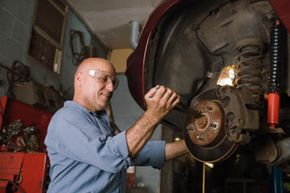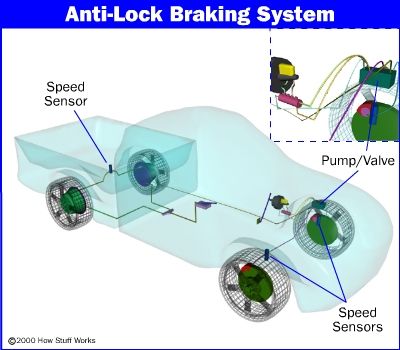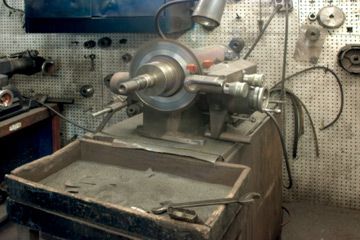During the past 100 years, cars have changed immensely. Take the braking systems. Up until the 1960s, drum brakes were the braking system of choice. Disc brakes were seen sporadically but didn't become mainstream until '70s [source: Britannica]. And the two technologies, while they do the same thing, couldn't be more different.
Drum brakes use shoes attached to the axles that move out toward a drum attached to the wheels, during the braking process. The friction created by this outward force is what stops your car. But drum brakes can be a bear to change and sometimes may require a brake puller to complete the task.
Advertisement
A brake puller is a claw-like contraption that uses leverage to pull the drum away from the brake shoes. Usually, a well-maintained vehicle won't require a brake puller when doing a brake job. However, an older vehicle might have rusted or stuck drum brakes. A brake puller will help break them free.
You also may need a brake puller if the brakes have worn down too far. When this happens, the inside of the drum becomes gouged and worn irregularly and these grooves can prevent the shoes from clearing the drum.
Brake pullers get their leverage from a long bolt in the center that applies pressure on the claws or fingers of the puller. As you slowly turn the bolt clockwise, the claws pull the drum away from the brake shoe assembly [source: Kalal]. Imagine facing a wall seated with your knees bent toward your chest and you're trying to remove a lodged object. When you grab it and pull, you can't remove it. But as soon as you push against the wall with your legs, it pops free. It's the same concept.
Brake pullers can cost anywhere from $59 on up [source: Bargain Outfitters]. If you're a car enthusiast who collects and works on older cars, you may want to invest in one. But if you just need it for the weekend, you can rent one from a tool rental center or even borrow one at no cost from an auto parts store such as Auto Zone. (You might have to leave a deposit, though).
In addition to the puller, you'll need a few basic garage tools to ensure safety. Make sure to use an approved jack, jack stand and tire chocks. Tire chocks are especially essential as they prevent the vehicle from rolling once either the front or rear wheels are in the air. Check your owner's manual for the recommended jack. Floor jacks come in different ratings. Usually a two and a half ton jack is sufficient.
If the brake puller has instructions, follow them closely. If not, back out the center nut by turning it counter-clockwise until the jaws are opened wide enough to fit around the brake drum. Place the tips of the jaws on the edge of the backside of the drum, then turn the center nut clockwise until it begins to tighten. As you tighten the nut, the jaws will slowly pull the drum away from the brake shoes until it's free.
Once you've removed the drum, inspect it closely. If it's grooved or damaged from rust, you'll need to either get it machined or replace it. And if you're going to change one drum, you may as well change the opposite side. Uneven brake wear can make your vehicle pull to one side during braking.
Before you start working on your car, don't forget to check out related automotive articles on the next page.
Advertisement



